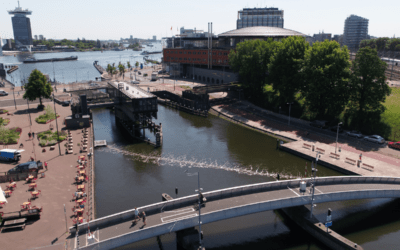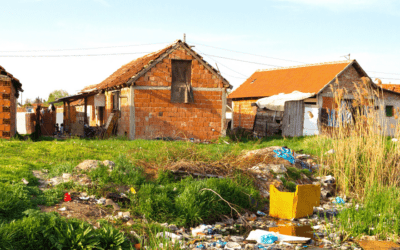Plastic pollution is a global challenge affecting our rivers, oceans, and the ecosystems that depend on them.[1] At The Great Bubble Barrier, we’ve created an innovative, nature-based solution to tackle this issue close to the source. Our mission is to protect rivers and prevent plastic from entering the ocean. In doing so, we are committed every day to advancing the UN’s Sustainable Development Goals.
Author: Jacqueline Haitz
Editor: Judith de Waard
A Simple Idea with Big Impact
The Great Bubble Barrier was born from the passion of sailors, divers, and surfers dedicated to protecting the blue spaces they love. Our solution is as simple as it is effective: a Bubble Barrier. Air is pumped through a perforated tube on the riverbed to create a bubble curtain, guiding plastic waste to the catchment system at the quay where it can be collected.
This non-invasive solution operates 24/7 without disturbing boat traffic or wildlife, seamlessly integrating into the waterway.[2] Our technology is designed to cover the full width and depth of waterways, making collecting plastic in the entire water column possible. It offers a practical solution for cities and towns looking to manage plastic waste more effectively while using green energy.
But more than just a technology, it’s a step towards a larger goal: protecting our environment and contributing to a sustainable future. Recognised for its impact, The Great Bubble Barrier received the SDG Awards Netherlands 2024, underscoring our commitment to sustainable innovation and adherence to UN SDG frameworks.
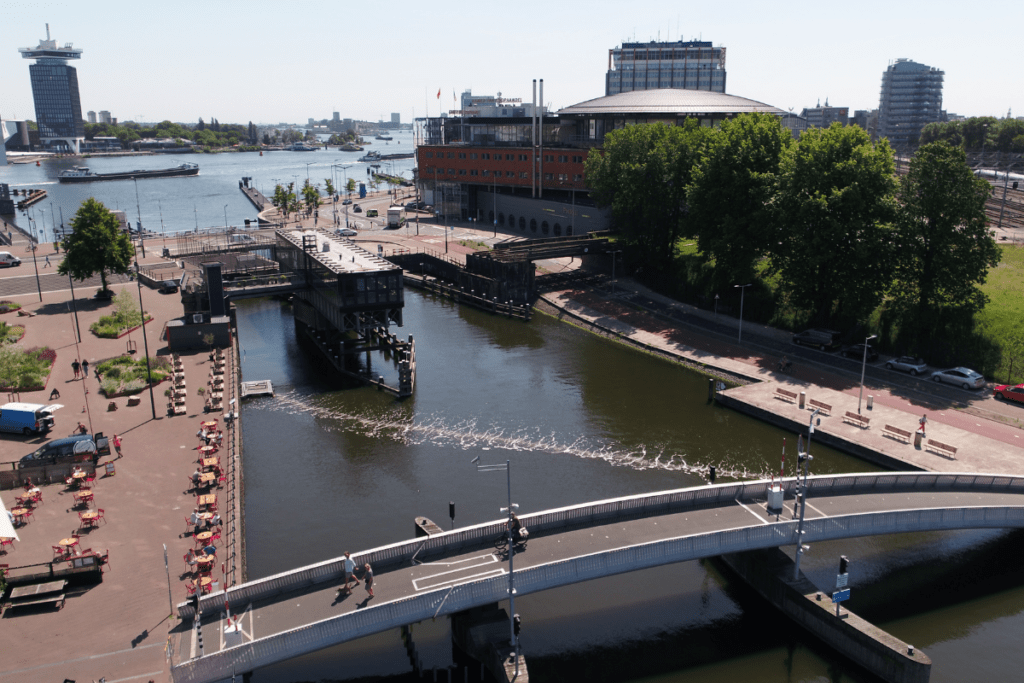
Supporting the Sustainable Development Goals
The United Nations established 17 SDGs as a comprehensive framework for achieving a sustainable and equitable world by 2030.[3] Specific targets accompany each goal to address critical global challenges like poverty, inequality, and environmental degradation.
At The Great Bubble Barrier, our work directly supports three crucial SDGs: Clean Water and Sanitation (SDG 6), Sustainable Cities and Communities (SDG 11), and Life Below Water (SDG 14). Our actions focus on reducing plastic pollution in water, enhancing urban water management, and protecting marine ecosystems. Let’s take a closer look at each of them.
SDG 6: Clean Water and Sanitation
Goal 6 Ensure access to water and sanitation for all
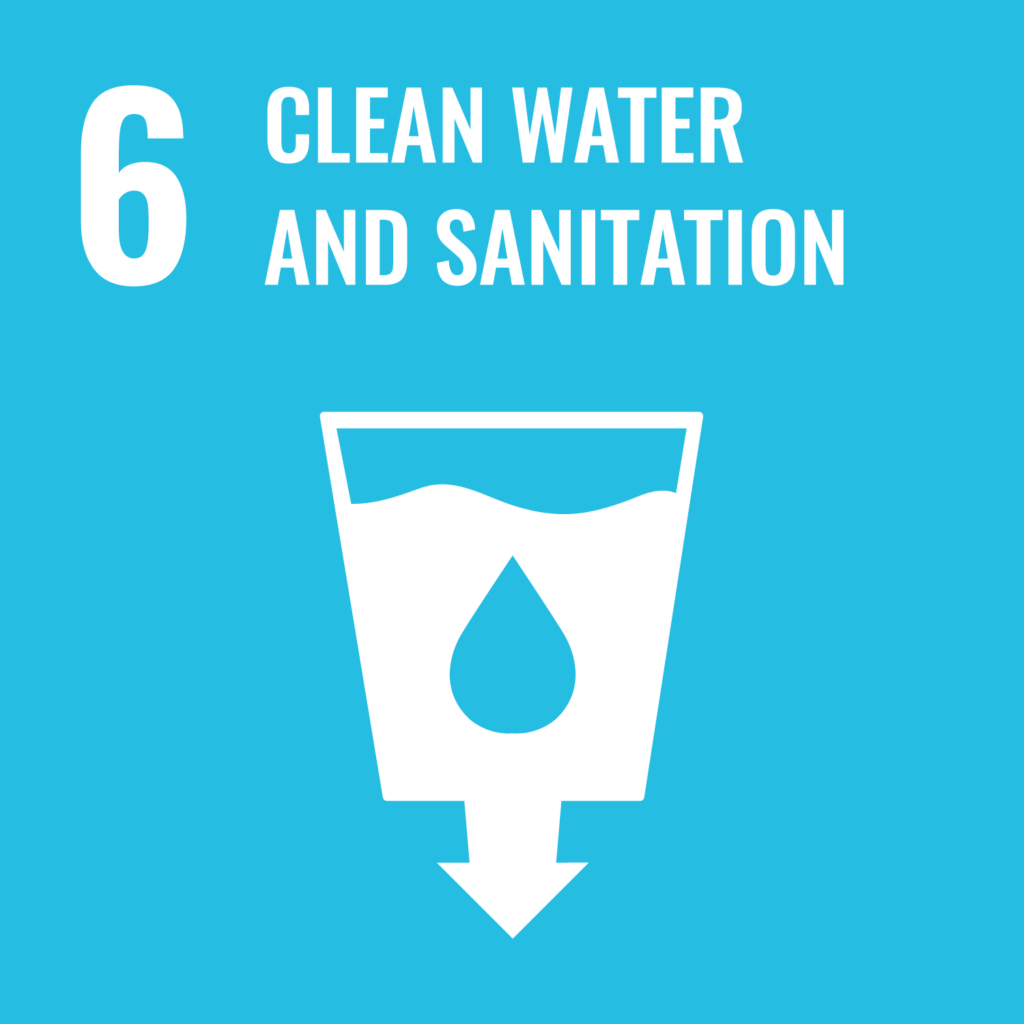
Access to clean water is vital for sustaining life, fostering healthy communities, nurturing ecosystems, and driving economic development.[4]
However, pollution – especially from plastic waste – poses a significant threat to our waterways, making their protection crucial. By capturing plastic in rivers and canals, we strive to keep our water clean, benefiting both wildlife and local communities.
Removing plastic from rivers early on is essential to prevent the degradation of larger plastics into microplastics. These tiny particles can contaminate drinking water and pose risks to public health. For more details on microplastics and their effects, read our blog on the topic.[5]
SDG 11: Sustainable Cities and Communities
Goal 11 Make cities inclusive, safe, resilient and sustainable
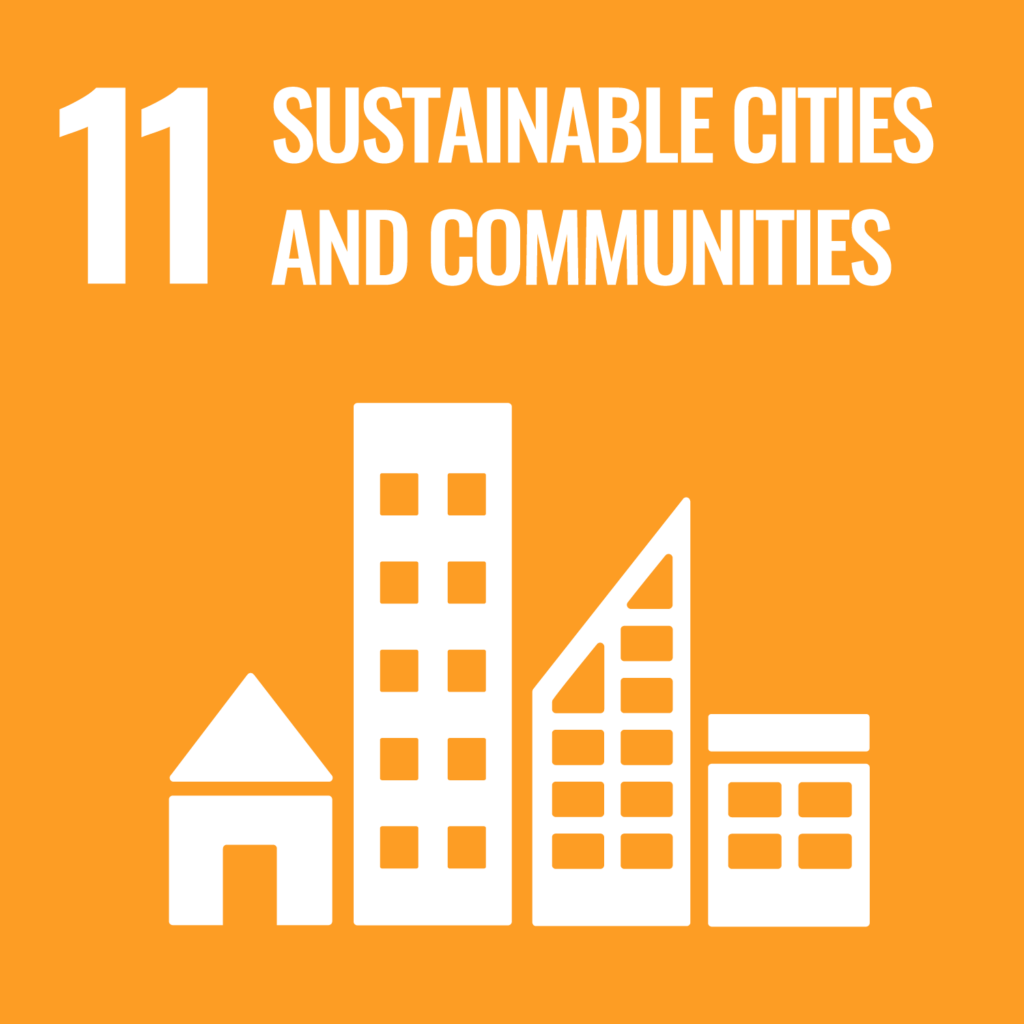
Cities are growing rapidly, and with that growth comes challenges such as waste management and pollution. Keeping urban waterways clean is essential for creating healthy and sustainable living environments for citizens.[6]
The Great Bubble Barrier provides an innovative solution for cities to manage plastic waste effectively. By intercepting plastic in cities, we not only help reduce the environmental impact of urban areas but also raise awareness about clean water within communities.
Cleaner rivers improve water quality, which benefits agriculture and industry while also reducing the costs associated with water filtration and treatment processes[7]. Furthermore, contaminated rivers pose serious health risks, as pollutants can lead to waterborne diseases. By maintaining cleaner waterways, cities can significantly decrease these risks, ultimately enhancing public health and fostering a more resilient urban landscape for everyone.[8]
Additionally, clean rivers and canals offer economic benefits to cities by increasing opportunities for recreation and trade. The global economic loss due to plastic pollution ranges from $5.5 to $20 billion annually.[9] Investing in river cleanup can attract visitors and businesses, ultimately boosting local economies.
SDG 14: Life Below Water
Goal 14 Conserve and sustainably use the oceans, seas and marine resources
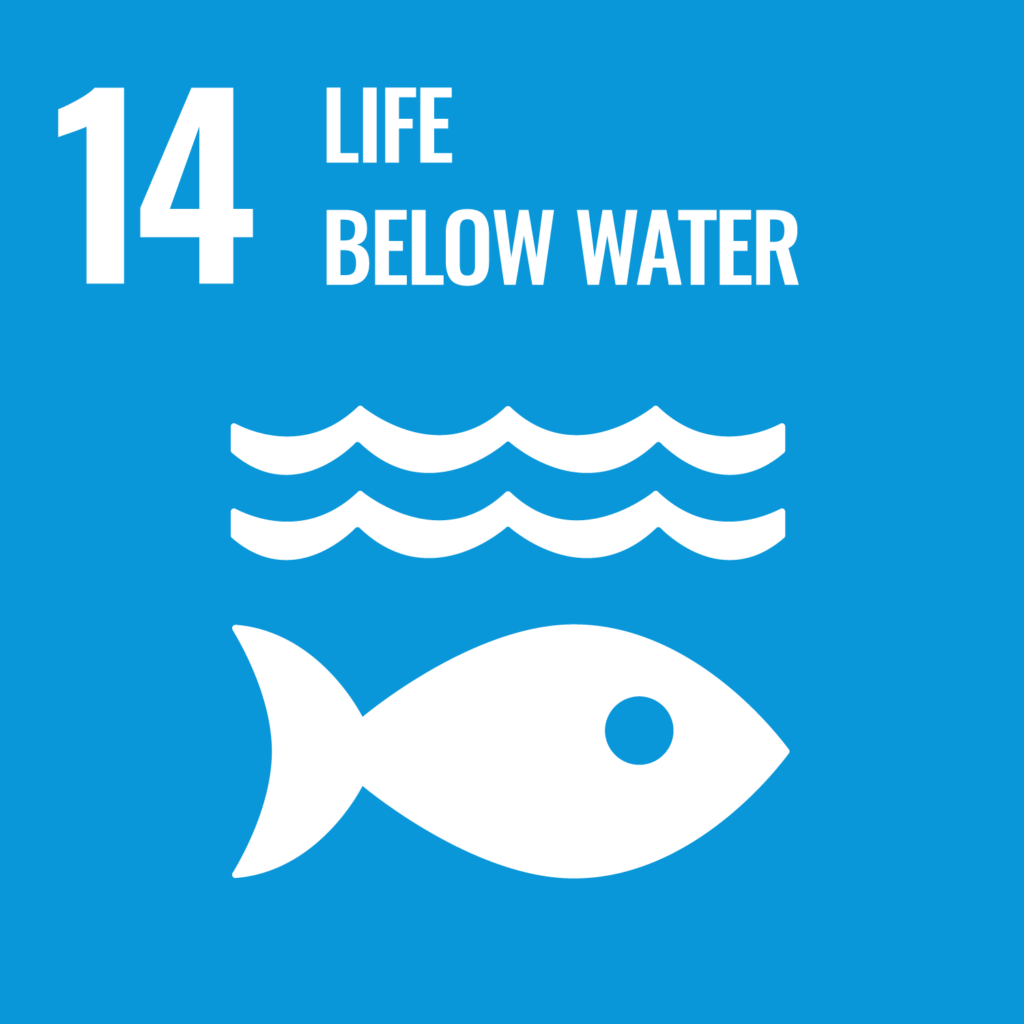
The ocean is fundamental to our planet, playing a key role in climate regulation, oxygen production, and supporting millions of livelihoods[10]. However, plastic pollution poses a serious threat to ocean ecosystems and marine life.
The Great Bubble Barrier addresses this issue by intercepting plastic waste before it enters the ocean, aligning with Target 14.1, which aims to “prevent and significantly reduce marine pollution by 2025, especially from land-based sources”.[11] It is important to note that up to 80% of ocean plastic originates from rivers and coastlines, highlighting the need to control pollution closer to the source.[12]
Legacy plastic, which refers to the plastic that remains in the environment long after its initial use, poses additional challenges for marine ecosystems.[13] By effectively managing legacy plastics early on in rivers, we can considerably reduce the amount of plastic accumulating in the ocean and seas.
Why SDGs Matter: A Collective Effort for Change
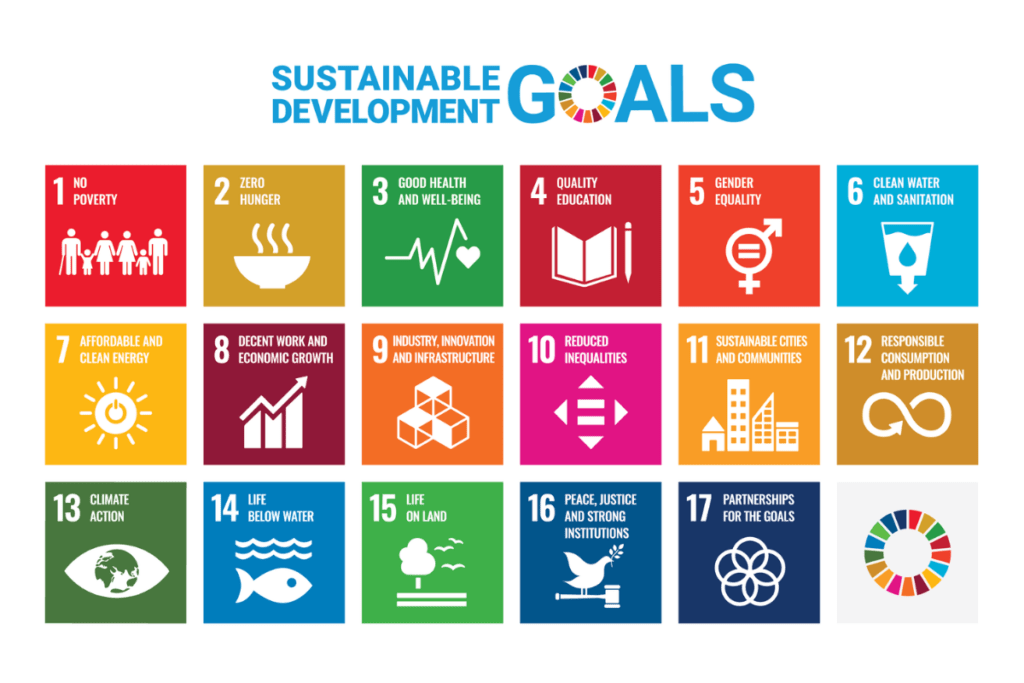
The Sustainable Development Goals (SDGs) are crucial for effectively tackling the world’s most urgent environmental and social challenges While innovative solutions like the Bubble Barrier are making progress, achieving these goals requires more than technological innovation—it demands collective action from policymakers, organisations and communities.
To drive meaningful change on a large scale, we need strong regulatory frameworks that promote sustainable practices and enhance the impact of environmental initiatives. As discussed in our article, ‘Can Regulation Solve Plastic Pollution?’,[14] public advocacy plays a pivotal role in advocating for these necessary policy changes.
By supporting the SDGs, advocating for effective regulations, and adopting sustainable behaviours, we can work together to create a cleaner future for everyone.
Find out how you can support our work and take action to clean your river.
References
[1] Cottom, J.W., Cook, E. & Velis, C.A. A local-to-global emissions inventory of macroplastic pollution. Nature 633, 101–108 (2024). https://doi.org/10.1038/s41586-024-07758-6
[2] The Great Bubble Barrier. (n.d.). The Great Bubble Barrier Technology. Retrieved November 21, 2024, from https://thegreatbubblebarrier.com/technology/
[3] United Nations. (n.d.-a). Sustainable Development Goals. Retrieved November 21, 2024, from https://sdgs.un.org/goals
[4] United Nations. (n.d.-b). Goal 6: Ensure availability and sustainable management of water and sanitation for all. Retrieved November 21, 2024, from https://sdgs.un.org/goals/goal6
[5] The Great Bubble Barrier. (n.d.). What are microplastics? Retrieved November 21, 2024, from https://thegreatbubblebarrier.com/what-are-microplastics/
[6] United Nations. (n.d.-c). Goal 11: Make cities and human settlements inclusive, safe, resilient, and sustainable. Retrieved November 21, 2024, from https://sdgs.un.org/goals/goal11
[7] United Nations. (2015). Implementing improvements in water quality. https://www.un.org/waterforlifedecade/waterandsustainabledevelopment2015/images/water_quality_eng.pdf
[8] World Health Organization. (2019). Annual report: Global water, sanitation and hygiene. https://iris.who.int/handle/10665/336582
[9] Deloitte. (2018). The price tag of plastic pollution. https://www2.deloitte.com/content/dam/Deloitte/my/Documents/risk/my-risk-sdg14-the-price-tag-of-plastic-pollution.pdf
[10] LSE Grantham Institute. (n.d.). What role do the oceans play in regulating the climate and supporting life on Earth? Retrieved November 21, 2024, from https://www.lse.ac.uk/granthaminstitute/explainers/what-role-do-the-oceans-play-in-regulating-the-climate-and-supporting-life-on-earth/
[11] United Nations. (n.d.-d). Goal 14: Conserve and sustainably use the oceans, seas, and marine resources for sustainable development. Retrieved November 21, 2024, from https://sdgs.un.org/goals/goal14
[12] Ritchie, H., & Roser, M. (n.d.). Ocean plastics. Our World in Data. Retrieved November 21, 2024, from https://ourworldindata.org/ocean-plastics
[13] Royal Society. (2023). Legacy plastics: Policy briefing. https://royalsociety.org/-/media/policy/projects/legacy-plastics/legacy-plastics-policy-briefing.pdf
[14] The Great Bubble Barrier. (n.d.). Can regulation solve plastic pollution? Retrieved November 21, 2024, from https://thegreatbubblebarrier.com/can-regulation-solve-plastic-pollution/


